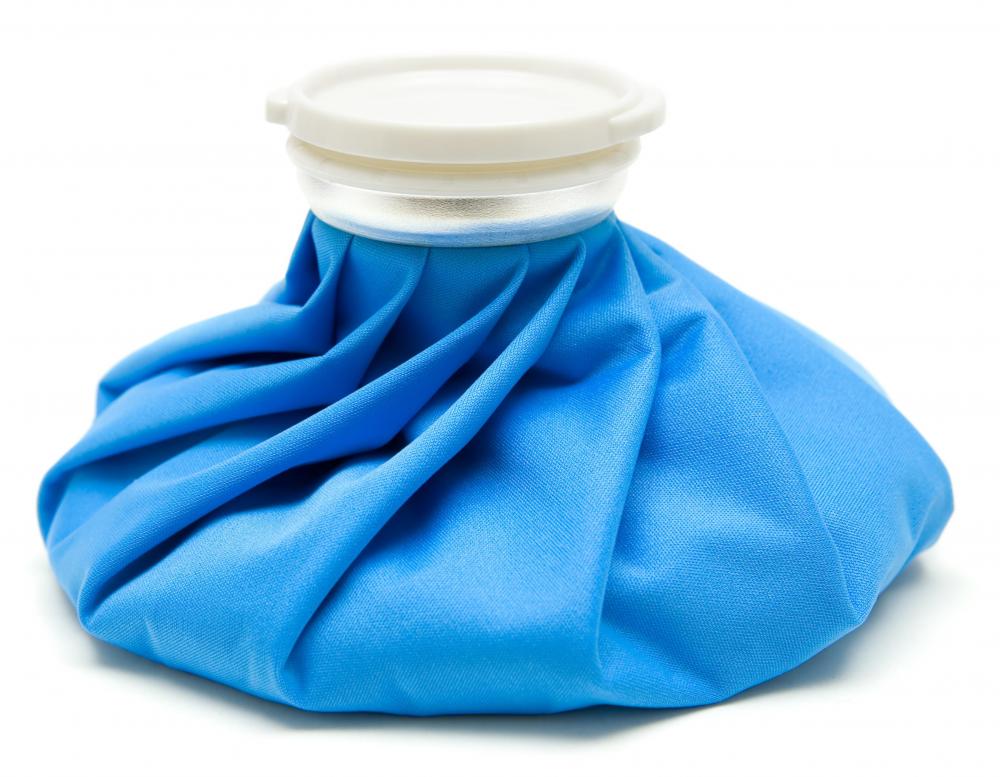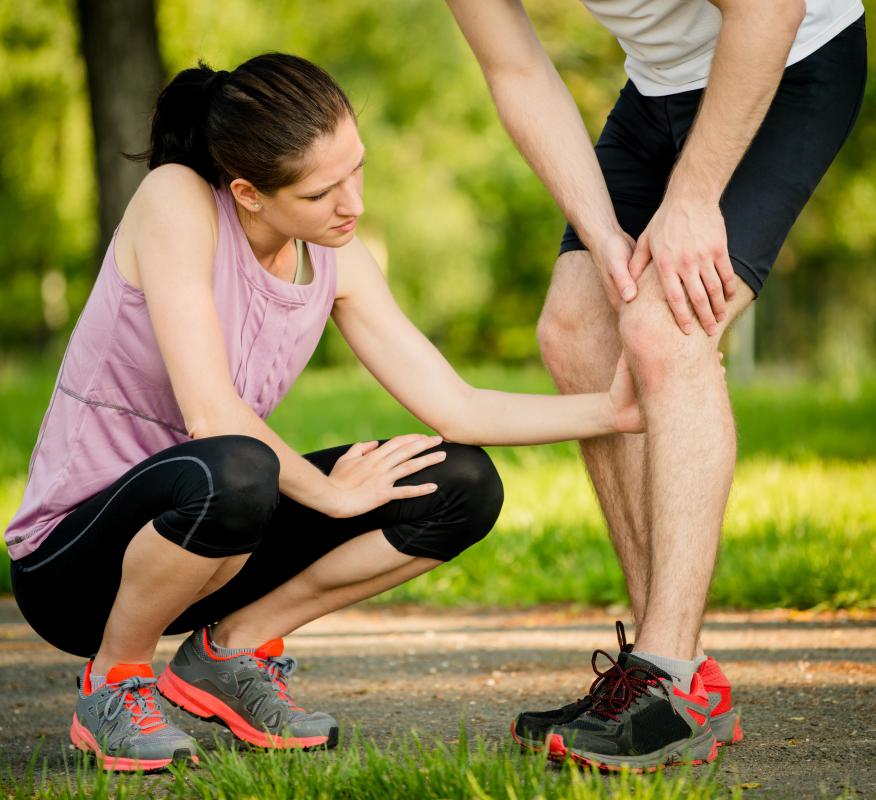At WiseGEEK, we're committed to delivering accurate, trustworthy information. Our expert-authored content is rigorously fact-checked and sourced from credible authorities. Discover how we uphold the highest standards in providing you with reliable knowledge.
How can I Treat Shin Splints?
The bio-mechanics which allow us to walk, run, dance or jog are very intricate, and even the slightest misalignment can put undue stress on a joint or ligament. Such is the case with a painful and often debilitating condition known as shin splints.
Shin splints occur whenever the ligaments and muscles of the lower leg become hyper-flexed or torn from overexertion and twisting. Runners and dancers are especially prone to shin splints, since their activities involve a significant amount of vertical jumping combined with forward movements. Walkers are also prone to experience shin splints, especially when wearing unsupportive shoes or changing their strides.

One of the best ways to prevent shin splints is by eliminating the root causes. Stretches and warm-up exercises before starting physical activity can help prevent muscles and ligaments from tearing easily under stress. Building up the calf muscles through isolated exercises can also reduce the incidents of shin splints caused by shock and impact. Visiting a podiatrist for a proper stride and alignment test can also help determine the proper style of footwear for various activities.

But what should you do if you develop shin splints? Sports medicine experts suggest using the standard R.I.C.E.R. method, short for Rest, Ice, Compression, Elevation and Referral. In addition, sufferers from shin splints should take over-the-counter anti-inflammatory medications such as ibuprofen or aspirin. Anti-inflammatory medications should help to reduce the swelling, not just relieve the pain and soreness.

The first thing to do is rest the affected limb(s). Further exertion with an inflamed leg can only cause more damage and pain. Stop performing the activity and lie down on a couch or other comfortable flat surface. Resting the inflamed limb should reduce at least some of the immediate pain. Shin splints can feel like a sharp pain radiating from a specific area, but they can also have a dull, achy sensation like a toothache or headache. The entire lower leg may be sore to the touch.

The next step is to apply ice or other cold compress to the affected area. While heat therapy may sound more intuitive to some, at this point the ice will help reduce the pain caused by swollen muscle tissue and a build-up of fluids around the injury. The ice pack should be placed over the inflamed area for no longer than 20 minutes at a time, with a 40 minute break between applications. The point is not to freeze the area or reduce bloodflow through constriction of the vessels. The ice should reduce the immediate inflammation of the muscles, and should be discontinued after a few hours.

Compression is the next course to follow when treating shin splints. The swollen tissue needs to be compressed in order to minimize swelling. Wrapping the leg with an elastic bandage or adhesive sports tape should suffice, but be sure to use the appropriate width for the leg area. Compression bandages are sold in varying widths, so avoid using a very narrow tape on a large area like the lower leg. Compression bandages should not cut off the patient's circulation, so use caution when applying them.

Elevation is essential for the treatment of shin splints, since accumulation of fluids can make the pain feel worse. Elevation of the legs needs to be above the level of the patient's heart to be effective, however. Gravity should prevent excess blood from pooling in the lower limbs and feet.
Finally, a person suffering from shin splints should be referred to a trained medical professional for future examination and treatment. A specialist in sports-related injuries may be able to recommend ways to avoid shin splints in the future, either by modifying the activity or the person's shoes and other equipment. A podiatrist should be able to determine if a person's natural stride and alignment may be triggering shin splints. A condition called "overpronating", in which the foot splays outwards with each step, often leads to the development of lower leg pain, especially during exercise. Pronation can often be addressed through orthotic appliances or a change in footwear.
Shin splints can indeed be a very painful condition to endure, although minor cases should heal after a short period of rest, analgesics and deep tissue massage. Heat therapy may also bring relief to painfully inflamed muscle tissue, along with the application of heat-generating sports cremes.
AS FEATURED ON:
AS FEATURED ON:
















Discussion Comments
This helps a lot. Thank you so much. There has been so much that I have not been doing and now I can begin to do it. Thank you!
Excellent to know as a massage therapist..These Geek emails are very informative and educational with simple straightforward analysis...and answers.
Post your comments